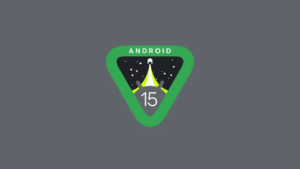Finding ways to keep users engaged is one of the toughest tasks for Android app developers, as many of them inadvertently close apps when swiping back on their phones. This happens because consumers often don’t know which exact screen the back motion will take them to. Although you would expect this not to be a problem for the Android operating system, Google had to deal with this hurdle through engineering. The solution is the predictive back gesture, which is now enabled by default in Android 15 and has finally moved out of Development Preview status. Many important Google apps, including Chrome, will soon use this feature.
Follow AndroidVogue on Twitter/X now!
With Android’s predictive back gesture, users can see where the back gesture will end up before they finish it. This gives them the option of committing to turning around or staying put. If the user were to swipe back, for instance, to return to their home screen, they would see a preview of it while swiping, giving them the option to choose whether to close the application or not. Even better, on Android launchers that support it, the system plays a “back-to-home” animation that skillfully shrinks the screen to the app icon, if it is present on the home screen.
However, for the system to accomplish this, it must be aware of when the home screen is the subsequent action in the operating system’s so-called “back stack.” This is not an issue for apps that let the system handle back handling; however, apps that have bespoke back behavior must include support for the predictive back gesture.
For this reason, when Google first included support for predictive back gestures to Android 13, it required system opt-in through a setting in Developer Options. This choice was made to allow developers time to rework how their apps use the back button and to allow Google to update its own libraries to reflect the new functionality.
But now it’s finally time for Google to turn on the Predictive Back gesture mechanism by default. As of the release of Android 15 beta 2 in May, the Predictive back gesture is now enabled by default and cannot be toggled by the user under Developer options.
Follow AndroidVogue on Facebook!
The Google Chrome team has turned on support for the functionality in the Android app ahead of the stable release of Android 15 later this year. Currently, this takes the form of displaying a preview of the previous page when browsing through Chrome’s settings, bookmarks, downloads, and history, as well as displaying a preview of the home screen by the user’s back motion.
Unfortunately, Google has announced that it is on its way to developing a prototype for a feature that would allow Chrome to show you a preview of the last page you saw. Google Chrome’s back-to-home animation flag is now always on in Android Canary releases. Other Chrome channels will soon be able to use this feature. You can use this function even if you’re not running Android 15 as long as your smartphone is running Android 13 or 14.

Do you like this post? Kindly, let us know on X/Twitter: we love hearing your feedback! If you prefer using other social platforms besides X, follow/join us on Facebook.
